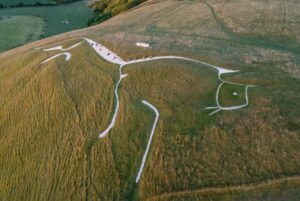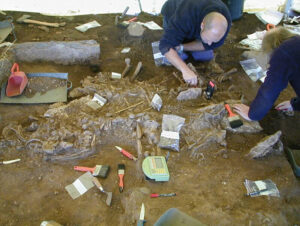A passion for the natural world drives many of our adventures. And when we’re not actually outside, we love delving into the discoveries about the places where we live and travel. Here are some of the best natural history links we’ve found this week.
Mother Nature prefers symmetry and simplicity: Symmetry occurs too often in nature for it to be pure chance. Scientists have a new hypothesis to explain it.
The first step in evolution is a genetic mutation, which changes physical characteristics. This first step holds the key to symmetry. Symmetrical objects have a shorter set of genetic instructions at the point of variation. Shorter is easier.
“It’s much more efficient to follow an instruction that says, ‘do this, and then repeat it x times,’ than to follow all the detailed instructions required for a more complex asymmetrical shape,” said physicist Ard Louis.
A VR simulation of a Palaeolithic plaquette in firelight. Video: Izzy Wisher
Flickering firelight, moving images
Ice Age artists used firelight to animate stone art: Our Ice Age ancestors etched still images into rock, but firelight may have helped add animation to this ancient art. Archaeologist Andy Needham said it seems “akin to Paleolithic TV”.
Researchers analyzed 50 images on the limestone walls in the Montastruc shelter in southern France. These 15,000-year-old plaquettes show cracking and discoloration from fire exposure. This made researchers wonder if those ancient artists deliberately use firelight to animate the still images. They brought replicas of stone carvings close to flames and noted how the figures seemed to move. Animals such as horses writhed dynamically on the rock.
See how the Tonga volcano unleashed its power: When the Hunga Tonga-Hunga Ha’api volcano erupted in January, it generated a shock wave in the atmosphere. It circled the Earth for days. Scientists had not seen such a phenomenon for half a century.
Oceanographer Angel Amores has created a simulation that shows how the shock wave traveled. It took 36 hours to circumnavigate the globe, in concentric rings of energy.
Dr. Amores, who works in Majorca, Spain, recorded the first shock wave crossing his island 15 hours after the eruption. Thirty-six hours later, it passed again. Then in another 36 hours, it passed a third time.
As the pulse reverberated across the globe, weather stations in many countries detected it. “This was like a giant global sonic boom,” said physicist Mark Boslough.

A visualization of the shock waves from the volcanic eruption in Tonga. Follow the article link to see the full simulation. Image: The New York Times
Gem-making meteorites
Diamonds on Mercury: For billions of years, meteorites, comets, and asteroids have crashed into the surface of Mercury. Computer modeling suggests that heat and pressure from the collisions likely created some sparkling leftovers: Diamonds may cover one-third of the little planet’s crust.
Graphite exists on Mercury, graphite is carbon, and heat and pressure could shift this carbon into a lattice pattern, forming diamonds.
Eavesdropping on dolphins: Atlantic white-sided dolphins spend most of their time in the deep ocean. We have no good estimate of their population. We do know that they occur most commonly in the sub-polar regions and are very sensitive to climate change.
This species does turn up as bycatch on fishing vessels. Residents of the Faroe Islands also have an annual hunt for them. This prompted marine scientists to try to understand their vulnerability by listening to them.
They placed hydrophones in multiple spots to record the noises of these underwater mammals. With this blueprint of their vocabulary, computers can then detect the sounds they make during different activities. Ultimately, the recordings may help us discover the elusive creature’s population size and distribution.

Atlantic white-sided dolphins. Photo: Shutterstock
Blood red crown jellyfish discovered: Scientists have discovered a new species of crown jellyfish in Monterey Bay, California. The jellyfish lives in the midnight zone of the ocean, the area 1,000 to 3,000m below the surface.
The new species, dubbed Atolla reynoldsi, is 13 centimetres in diameter and has up to 36 tentacles. It has two stand-out features: First, it is blood red. Second, it lacks the single long tentacle that other crown jellyfish species have.
“These remarkable new jellies underscore how much we still have to learn about the deep sea,” said lead study author George Matsumoto.






